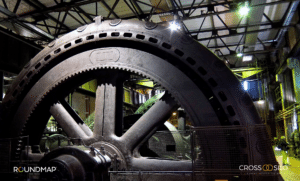Distinguishing between value creation and deployment (Strive-phase) and impact creation and deployment (Thrive-phase) is critical to clarifying their roles within the Strive & Thrive Cycle. Here’s is how we differentiate between these concepts, reflecting their distinct purposes and orientations:
1. Value Creation and Value Deployment (Strive-phase)
Definition:
- Value Creation: The process of designing, producing, and delivering products or services that fulfill a specific customer need or want. This focuses on the functional or economic utility of the product or service.
- Value Deployment: The intentional and equitable allocation of captured value—profits, resources, or knowledge—toward amplifying impact and addressing systemic challenges. Value Deployment bridges financial success with shared prosperity, ensuring that all stakeholders benefit from the value creation process.
Characteristics:
- Internal Focus: The process is driven by internal capabilities (e.g., R&D, production, supply chain efficiency).
- Transactional: Focuses on fulfilling a specific need or solving a particular problem efficiently.
- Customer-centric: Oriented around understanding customer needs and providing solutions to address them, without necessarily considering broader societal or environmental implications.
- Output-driven: Success is measured in terms of economic outcomes, such as profit margins, revenue, and cost efficiency.
Example:
A company manufactures a durable, affordable bike that meets the basic transportation needs of its customers. It designs, produces, and delivers the bike efficiently, capturing value through competitive pricing and high sales margins.
2. Impact Creation and Impact Deployment (Thrive-phase)
Definition:
- Impact Creation: The process of generating positive, lasting change for stakeholders, society, and the environment through intentional design, delivery, and collaboration. This focuses on the emotional, relational, social, and environmental outcomes associated with the product, service, or company practices.
- Impact Deployment: The strategic application of amplified impact to create long-term benefits and mitigate harm. Impact Deployment channels positive outcomes into systemic change, fostering resilience and driving progress for stakeholders, ecosystems, and the planet.
Characteristics:
- External Focus: Primarily oriented around stakeholders, ecosystems, and the broader community rather than just internal processes.
- Relational: Focuses on creating connections, fostering trust, and enhancing the overall experience or perception of the company and its products.
- Stakeholder-inclusive: Goes beyond the customer to consider the planet, society, and other stakeholders affected by the product or service.
- Outcome-driven: Success is measured in terms of broader, long-term outcomes such as environmental sustainability, social equity, or community well-being.
Example:
The same company manufacturing bikes ensures that its supply chain is sustainable, using recycled materials and renewable energy. It creates a customer success program to ensure the bike is used optimally and establishes a partnership with local communities to provide affordable transportation solutions. The company harvests impact through customer loyalty, community trust, and a reputation for sustainability.
Key Differences Between Value and Impact
| Aspect | Value Creation & Deployment (Strive) | Impact Creation & Deployment (Thrive) |
|---|---|---|
| Focus | Internal (company-driven capabilities) | External (stakeholder-driven ecosystems) |
| Purpose | Fulfilling functional needs or wants | Generating positive societal, environmental, and relational outcomes |
| Orientation | Transactional (what is delivered) | Relational and experiential (how it is delivered and perceived) |
| Measurement | Economic outcomes (profit, revenue, efficiency) | Broader outcomes (loyalty, trust, equity, sustainability) |
| Scope | Customer-centric (specific needs) | Stakeholder-inclusive (holistic well-being) |
| Example Activity | Designing a product that solves a practical problem | Ensuring the product contributes to environmental and societal goals |
| Output | Tangible utility (bike meets transportation needs) | Intangible and tangible benefits (brand trust, reduced carbon footprint) |
3. Integrating Value and Impact into the Strive & Thrive Cycle
Strive: Value Orchestration
- The Strive-phase focuses on Value Orchestration, optimizing internal capabilities to create and deliver customer value efficiently and profitably. This is largely operational and internally driven, though it may touch external partners (e.g., suppliers).
- Value Creation and Deployment: What the organization does to meet customer needs and capture revenue while laying the foundation for impact-making.
Thrive: Network Orchestration
- The Thrive-phase emphasizes Network Orchestration, fostering external relationships and shared impact networks to maximize societal and environmental outcomes.
- Impact Creation and Deployment: What the organization does to go beyond functional value, amplifying positive impact and capturing intangible benefits like loyalty, advocacy, and trust.
4. The Relationship Between Value and Impact
- Sequential and Interdependent:
- Value creation and capture in the Strive-phase provide the financial and operational resources needed to invest in impact creation and deployment in the Thrive-phase.
- Conversely, deployed impact reinforces value creation by fostering loyalty, trust, and brand equity.
- Complementary, Not Conflicting:
- Value addresses immediate needs efficiently.
- Impact enhances the experience, relational outcomes, and long-term societal benefits.
- The Job-to-Be-Done Lens:
- The job-to-be-done approach fits seamlessly into this distinction. It moves beyond solving functional needs to understanding the deeper meaning behind those needs (value) and the broader effects of fulfilling them (impact).
Conclusion
By distinguishing value creation and deployment (Strive-phase) from impact creation and deployment (Thrive-phase), our framework brings clarity and balance. Value focuses on meeting needs efficiently through internal orchestration, while impact extends to creating broader societal and environmental benefits through network orchestration. Together, they form a powerful cycle that ensures both financial sustainability and long-term ethical prosperity.
Continue Reading on Striving & Thriving:

More Than Crumbs: The Case for True Value Creation
For decades, shareholder primacy has dictated corporate decision-making, driving businesses to prioritize short-term profits and disproportionate returns to shareholders over long-term sustainability and stakeholder value.

Beyond Extraction: Why Regenerative Business is the Only Way Forward
The RoundMap’s Regenerative Business Framework proposes a dual-cycle approach to business: one focused on value creation and another on impact. However, reality presents us with

RoundMap Regenerative Business Framework: Empowering the Present while Building the Future
Executive Summary The Regenerative Business Framework addresses the critical need for businesses to move beyond mere profitability toward regenerative practices that drive long-term growth and

Rethinking the Flywheel: Why Amazon’s Misinterpretation Misses the Mark
The concept of a flywheel, as originally designed, was never about spinning faster to achieve exponential growth. It was about stabilizing energy output—ensuring a steady,

From Striving to Thriving: How Amazon is a Strive-Driven Giant Failing to Thrive
Amazon has become synonymous with business success, often hailed as a master of efficiency, customer obsession, and innovation. At the heart of its growth strategy

The Flywheel of Shared Success: How Impact Drives Sustainable Growth
In the fast-paced world of business, the focus often rests on immediate value creation—developing products, closing deals, and driving revenue. While these activities generate vital

The Reciprocity Effect: How Giving Back Completes the Cycle
Ten years ago, I began developing the Customer Lifecycle—a map of frontline activities—because I saw how social media was reshaping the marketplace. It wasn’t just

Impact Strategies to Amplify Value and Mitigate Harm Across Stakeholders
What if doing the right thing wasn’t just a moral choice but a strategic one? What if amplifying your organization’s positive impact while mitigating harm

From Extraction to Contribution: Thriving Together with Shared Success
The Flywheel of Shared Success is designed to demonstrate that staying within the boundaries of responsible growth doesn’t mean limiting our ambitions—it means channeling them

The Twin Engines of Progress: Returns on Value and Impact
At the heart of the Flywheel of Shared Success lies the powerful interplay between Value Returns and Impact Returns, both of which operate on the

From Hopping for Cash to Building Bridges: Why Self-Interest Alone Can’t Sustain Shared Prosperity
What we’re proposing with the Flywheel of Shared Success is nothing short of a call to confront and correct our deeply flawed execution of Adam

If Adam Smith would still be alive, how would he perceive our modern economic systems?
If Adam Smith were to assess the state of our modern economic systems, his critique would likely be sharp yet eloquent, reflecting the moral gravitas
Author
-
Edwin Korver is a polymath celebrated for his mastery of systems thinking and integral philosophy, particularly in intricate business transformations. His company, CROSS/SILO, embodies his unwavering belief in the interdependence of stakeholders and the pivotal role of value creation in fostering growth, complemented by the power of storytelling to convey that value. Edwin pioneered the RoundMap®, an all-encompassing business framework. He envisions a future where business harmonizes profit with compassion, common sense, and EQuitability, a vision he explores further in his forthcoming book, "Leading from the Whole."
View all posts Creator of RoundMap® | CEO, CROSS-SILO.COM




